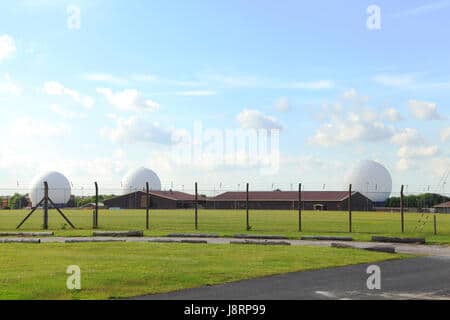The strategic importance of temporary air bases to the United States lies in their ability to bolster military presence and project power on a global scale. At a time of heightened geopolitical tensions, these temporary facilities enable rapid operations to be established in key areas, facilitating tactical responses to emerging threats. By diversifying its strongpoints, the U.S. Air Force can not only increase its operational effectiveness, but also deter its enemies with a tangible show of force. This dynamic approach could potentially reshape the balance of power in strategically sensitive regions and respond to the complex challenges of contemporary conflict.
Table des matières
ToggleStrategic adaptability in the face of geopolitical threats

In a climate of growing global tensions, it is imperative for UNITED STATES to strengthen their military presence in order to deter aggressive behavior from potential adversaries. The deployment of temporary air bases therefore becomes a major strategic tool. These installations make it possible to optimize the responsiveness of the armed forces and project air power in the event of a crisis.
By being able to quickly move resources, the U.S. Air Force can respond to unforeseen tactical situations while maintaining an effective defensive posture.
Logistical advantages of pop-up installations
Temporary air bases offer logistical advantages that should not be underestimated:
- Support for rapid operations: They make it possible to bring aircraft close to conflict zones without the need for permanent infrastructure.
- Cost reduction: The flexibility of temporary bases decreases the costs maintained by the armed forces to manage permanent installations.
- Downgrade Abilities: In the event of increasing threats, these bases can be quickly evacuated, allowing for better risk management.
Prompt response to regional crises
With adversaries capable of targeted attacks against permanent bases, it is crucial to establish air bases that can evolve according to the geographic and political situation. This deployment requires diversified operations where aviation plays a key role in the ability to react to potential attacks.
Agile deployment of aircraft from these bases in response to threats not only strengthens the security of troops, but also that of regional allies.
Support for allies and strategic partnerships
Temporary air bases can also promote cooperation with allies. They provide a platform to conduct joint exercises, share information and build interoperable capabilities between different armed forces. This collaboration is essential to create a global support network.
Finally, the deployment of these bases demonstrates the United States’ commitment to collective security, which can potentially deter other nations from hostile behavior.
Preparedness for evolving military technologies
As threats evolve with the emergence of advanced military technologies, temporary bases allow for faster integration of new weapons systems. This ensures that the U.S. armed forces remain at the forefront of operational capabilities.
By quickly integrating solutions such as drones and air defense systems, temporary bases contribute to greater resilience against complex attacks.
Conclusion: a need for investment in operational flexibility
The deployment of temporary air bases on a global scale meets a critical need for national security and of defense. To protect U.S. interests and those of its allies, it is essential to maintain superior flexibility and adaptability capable of countering emerging threats.
En direct, guerre en Ukraine : les Russes frappent trois bases aériennes https://t.co/ZwIAMflikS
— Le Monde (@lemondefr) July 4, 2024
























